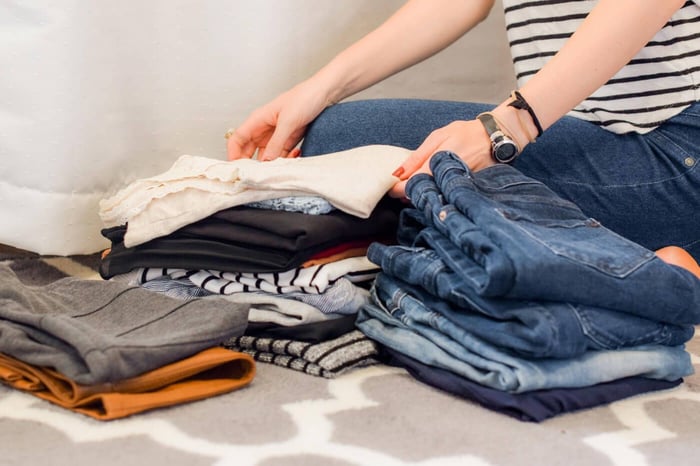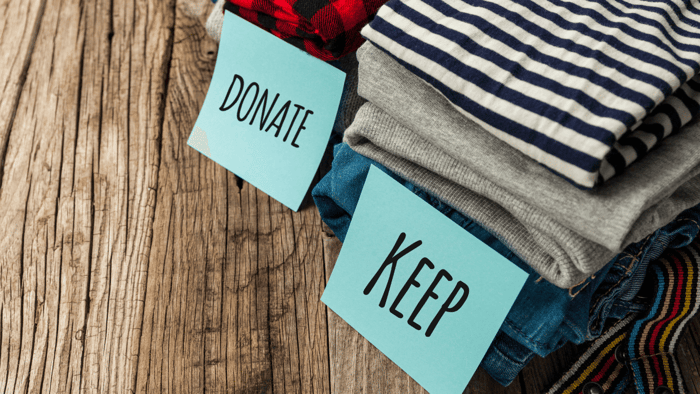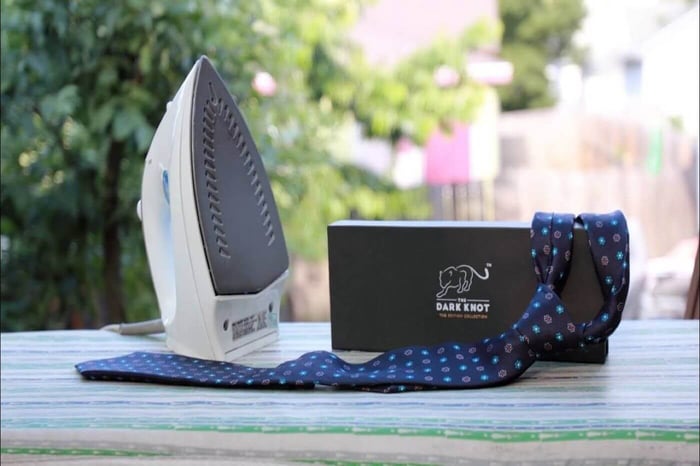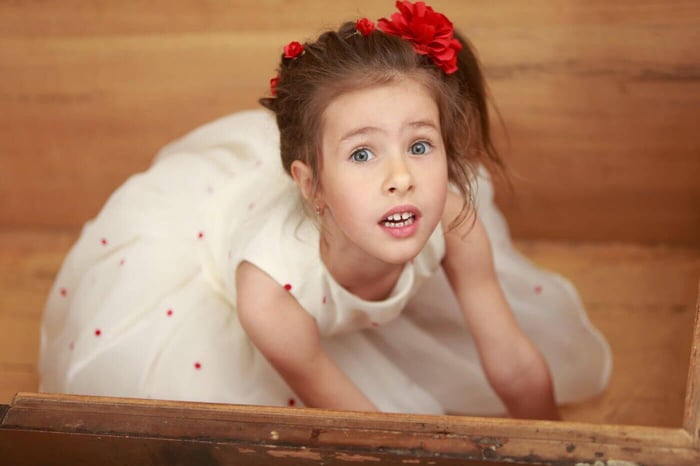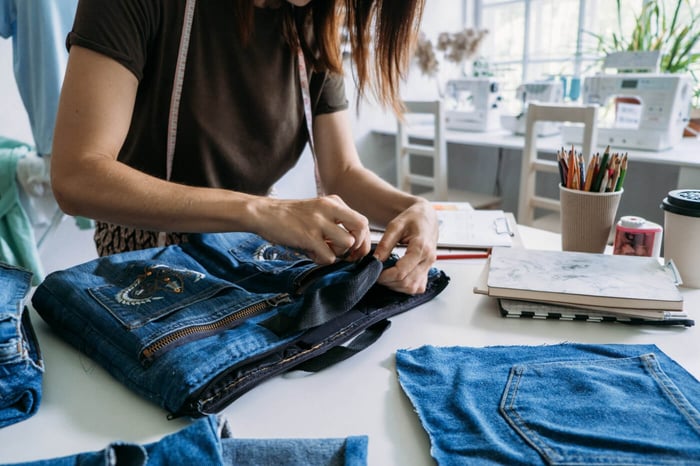
Wondering how to clean clothes exposed to mold spores? In this article, we'll talk about how to clean clothes exposed to mold spores, such as careful hand-washing, use of bleach, and excess drying time to keep the clothes clean. One suggestion is to dry the clothes in the sun or in a dryer at high heat for 20 minutes after washing them. Then, iron your clothing with the Nori Press afterward to ensure that there are no signs of mold spores left. Get your Nori Press iron today!
Mold grows in damp environments, such as bathrooms where towels are often kept wet for prolonged periods of time or kitchens where food spills occur with less frequency than other areas of the house. The most common type of mold found indoors is known as Aspergillus, which produces a family of chemicals called mycotoxins that have been linked to respiratory problems and allergies in humans. In order to avoid these health risks from occurring it is important to take the necessary precautions when cleaning clothes contaminated with mold spores. First, you should always wear a protective mask when cleaning mold in order to avoid breathing in the spores since they can be harmful if they become airborne.
In addition, it is important to remember not to immediately wash clothes contaminated with mold in a washer that is used for other clothing items because the spores can spread to other clothing and contaminate them. Instead, make sure you first rinse the mold-contaminated clothes thoroughly and soak them for 5 minutes in two cups of bleach or sodium hypochlorite before washing. Also, try to avoid using a dryer when cleaning clothes contaminated with mold because the spores may become airborne during the drying process. If you must use a dryer make sure it has an effective lint filter and pay close attention in order to ensure the spores are not being blown in your face or in another area easily from one piece of clothing to another when the clothes are being taken out.
When dealing with damp clothes, it is important to take precautions in order to avoid exposing yourself to these harmful chemicals. Remember to use bleach and laundry detergent when cleaning mold in order to eliminate any spores that missed being cleaned off of the surface of your clothing by hand washing. Also, heating clothes contaminated with mold in the sun or in a dryer at high heat for 20 minutes can help kill spores that are on clothes. One important thing to remember is never to mix bleach with ammonia because it may produce harmful fumes, so you should always read labels carefully if using bleach and also make sure to only use one product at a time when dealing with moldy clothing.
Every time you work with mold remember to take necessary precautions in order to avoid coming into contact with the spores and always consult your doctor if symptoms such as respiratory issues or allergies do occur.
Use discount code “SHOP10” at checkout to save 10% on The Nori Press!
What is Mold?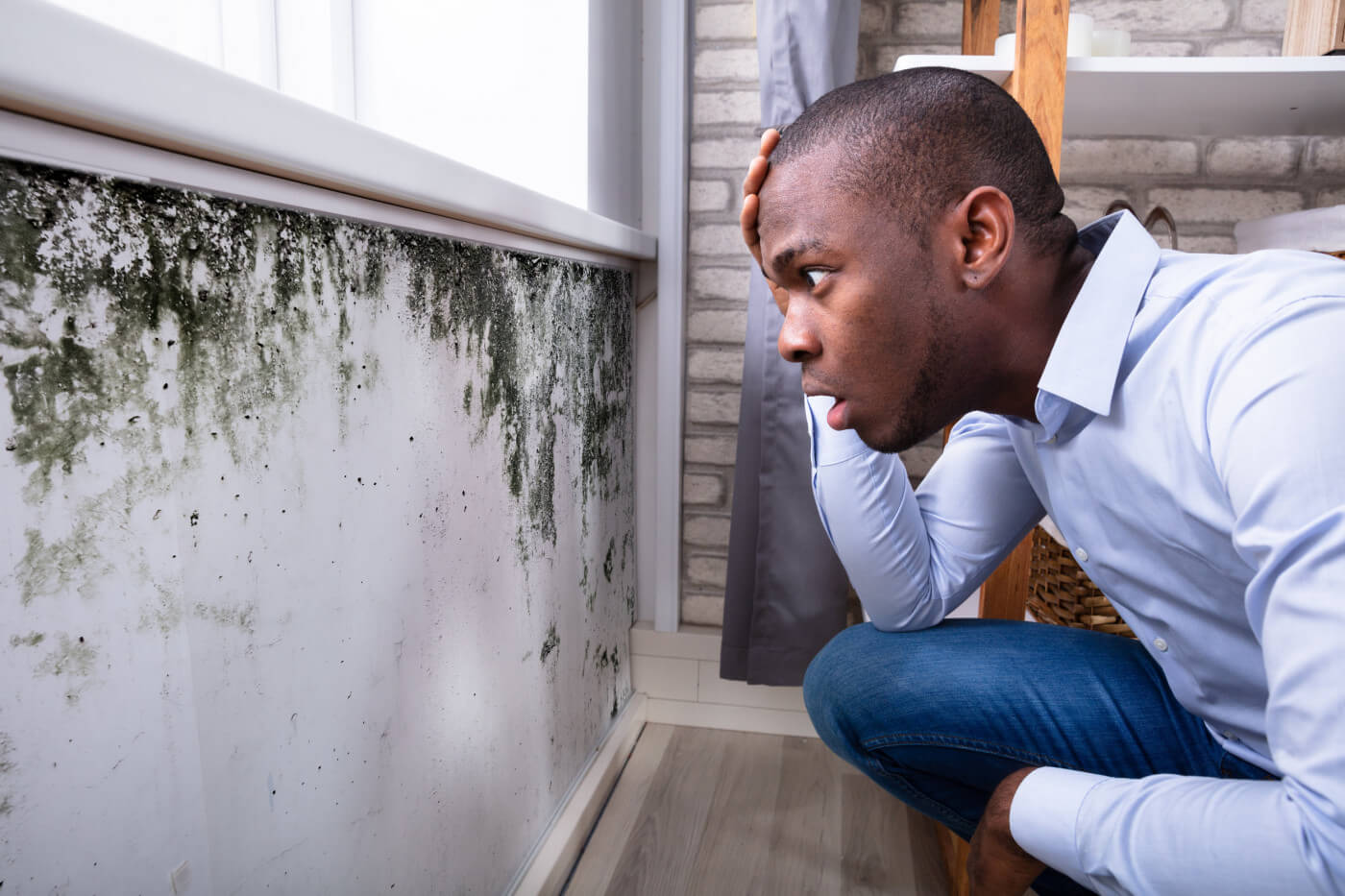
Mold is a fungus that typically grows in damp and humid conditions. Mold infestation on clothes is often caused by excessive moisture, humidity, and improper storage conditions, creating a breeding ground for mold spores to thrive and multiply.
Molds can be found just about anywhere including bathrooms, kitchens, and basements. The most common type of mold found indoors is known as aspergillus. Aspergillus produce a family of chemicals called mycotoxins which have been linked to respiratory problems and allergies in humans.
What are Mold Spores?
Mold spores are the reproductive form of mold. They can be found in water and air. In order to reproduce they attach to a surface such as clothing, shoes, etc... If you inhale these spores you can suffer from an allergic reaction or respiratory problems.
Symptoms from Mold Exposure:
- Respiratory problems/allergies
- Itchy, watery eyes
- Wheezing and difficulty breathing
- Skin irritation such as a red bumpy rash or hives on the skin.
Treatment: Skin exposure: Wash the exposed area immediately with soap and water. Inhalation of spores: If you inhale mold spores, you may suffer from an allergic reaction or respiratory problems. In order to combat this breathing in of the spores, these symptoms should subside with proper treatment.
Why is Mold Dangerous? 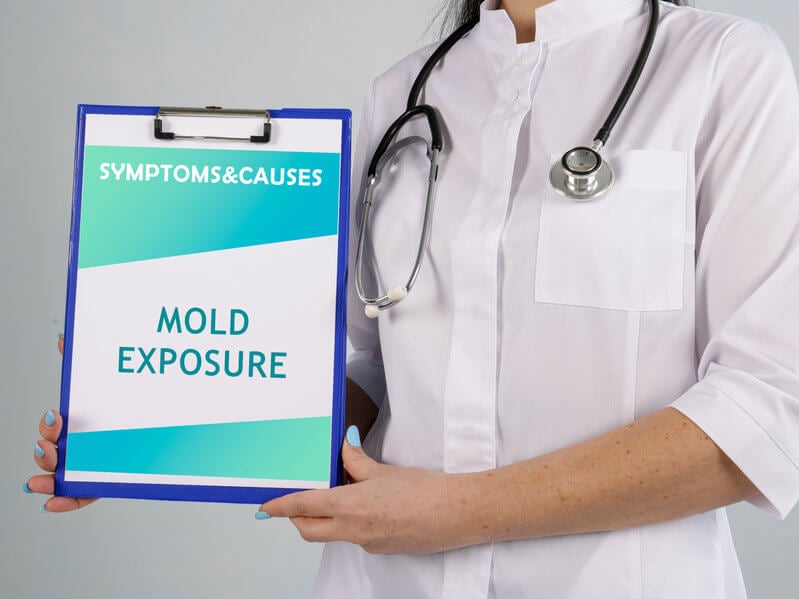
While mold may seem harmless, it actually poses serious risks to humans. In fact, according to the Centers for Disease Control and Prevention, “mold releases toxins that cause allergic reactions, respiratory problems, skin rashes, eye irritation, nausea, vomiting, diarrhea, headaches, fatigue, confusion, dizziness, muscle aches, fever, chills, cough, shortness of breath, chest pain, heart palpitations, irregular heartbeat, seizures, coma, death, and even brain damage.” What should I look out for if I suspect mold contamination?
If you think you have mold growing inside your home, take immediate action! You don't want to wait until the problem gets worse before taking steps to fix it. Here are some signs that indicate you need professional help:
• Your nose runs constantly;
• There is an overwhelming smell coming from one room or part of the house;
• Water stains appear on walls, ceilings, floors, furniture, etc.;
• A strong chemical odor permeates throughout the entire house;
• Black specks appear on the wallpaper, carpets, upholstery, curtains, mattresses, bedding, etc.;
• Stains appear on food items stored in refrigerators, freezers, cabinets, drawers, closets, etc.;
• Food spoils quickly;
• Fungal growth appears on foods stored in the refrigerator;
• The air feels musty and damp;
• Moisture collects around windows, doors, vents, pipes, electrical outlets, light fixtures, etc.;
• Furniture becomes stained and damaged;
• Walls begin to peel away from drywall;
• Floors develop cracks;
• Paint peels off the walls
How to Clean Clothes Exposed to Mold Spores
Mold spores can be found in many places- in the air, in old books, and even in your home.
Clothes that have been exposed to mold spores should be washed immediately to prevent moldy clothes and dried for a longer time than usual (20 minutes) to keep them clean and avoid any further contamination. Make sure you first rinse the clothes thoroughly and soak them for 5 minutes in two cups of bleach or sodium hypochlorite before washing.
You can then put them in a washing machine and wash them using the hot water setting. It is important to use a specific wash cycle to remove mold spores and bacteria from clothes.
You may also choose to dry your clothes in the sun or in a dryer set at high heat for 20 minutes after washing them. This will ensure that you remove mold stains and that the clothes are clean and mold-free before you wear them again.
Tips for avoiding coming into contact with mold spores when cleaning mold contaminated clothes
You can avoid coming into contact with mold spores by wearing rubber gloves, wearing a mask, and using an anti-allergen cleaner. To prevent mold, it’s crucial to control humidity levels, ensure proper ventilation, and regularly wash and dry clothes thoroughly. It’s also important to dry the clothes outside or in a dryer at high heat for 20 minutes after washing them.
The dangers of mycotoxins and how they can affect human health if not taken care of properly
Mycotoxins are a family of chemicals that are produced by Aspergillus molds. Exposure to toxic mold on clothes can lead to serious health implications, including respiratory problems and allergies in humans.
The dangers of mycotoxins and how they can affect human health if not taken care of properly:
There are two types of mycotoxins that aspergillus produces; Aflatoxin and Ochratoxin. Aflatoxin is a liver carcinogen meaning it causes cancer on the liver. It is also capable of destroying red blood cells and lowering production on immune system cells. Aflatoxin also has properties that cause certain foods to be contaminated with this chemical such as peanuts, grains, coffee beans, chocolate, fruits, vegetables, milk, nuts, etc…
Ochratoxin causes kidney damage among other things.
Both of these mycotoxins need remediation when found in homes and commercial buildings. You can consult your doctor if you experience respiratory problems or allergies after coming into contact with mold spores so some assistance may be received to combat the side effects of allergic reactions.
Treatment of Mold Exposure: 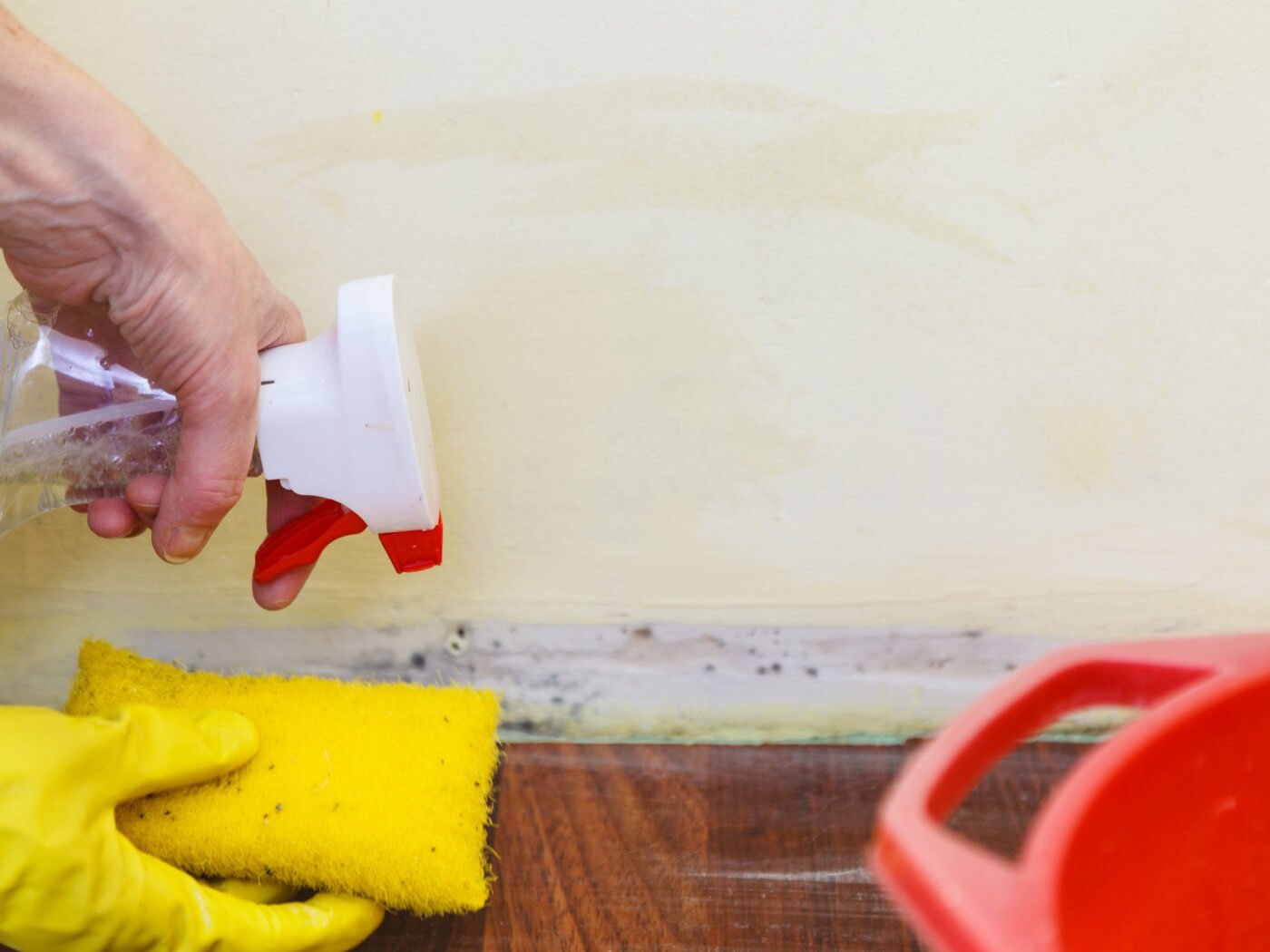
First, you should try to avoid any further exposure. Consult a mold remediation company for steps to clean clothes exposed to mold. If mold spores are inhaled, seek medical attention immediately.
If the skin has been exposed, wash the area with soap and water then rinse it off thoroughly with clean water. You can also use some hydrogen peroxide for added sterilization if needed.
After washing yourself or your clothing, you will need to treat the affected area with anti-fungal medication. Specifically for mold exposure, you should consult your doctor to see if it is necessary to use this medication. Don’t self-medicate since some medications can be toxic, take too much time to show results, or are not effective in treating mold exposure.
Other ways in which one may come into contact with harmful mycotoxins that need to be avoided at all costs
Mold spores are not just found outside of homes- they're also inside, in old books, and other places. When you touch something that has mold spores on it, the spores can become airborne and you inhale them.
The most common mycotoxins found in homes and commercial buildings are aflatoxin and ochratoxin. Whenever you see them, it's best to contact a professional for remediation. They can come into contact with you through inhalation or skin exposure if you fail to take precautionary measures such as wearing gloves and a mask. If you notice any of the symptoms listed above contact your doctor immediately.
Most importantly if mold spores are your home or commercial building, it's best to take precautions before coming into contact with them!
You can avoid coming into contact with mold spores by wearing rubber gloves, wearing a mask, and using an anti-allergen cleaner.
Benefits of using Mold Armor
There is a product that I found called "Mold Armor". One of the benefits is that you can use this for clothes and furniture. There seems to be a lot of success with this and it may be worth trying out. The main ingredient is chitosan, which is an organic compound that comes from food-grade shells of crabs or shrimp.
FAQs About Mold and Getting Mold Spores Out of Your Clothes
Why Should You Throw Away Items After Mold Removal?
It depends on what type of mold was present. Some types of molds do not pose a threat to humans while others can have serious consequences. For example, black mold poses no risk to human beings but white mold, another kind of mold (mycotoxins), does.
What Are Mycotoxins And How Do They Cause Health Problems?
Mycotoxins are toxins produced by certain fungi species. These include aflatoxins, fumonisin B1, zearalenone, deoxynivalenol, T2 toxin, cyclopiazonic acid, sterigmatocystin, patulin, citrinin, roquefortine C, penicillium toxins, and ergot alkaloids.
These substances are usually found in foods like grains, nuts, fruits, vegetables, spices, dairy products, meats, poultry, eggs, and fish. In addition, these compounds can be found in soil, dust, plants, animals, and insects.
Some people who work outdoors are more likely to get sick because their immune systems aren't strong enough to fight off the effects of mycotoxins. This includes farmers, gardeners, landscapers, construction workers, factory employees, etc.
In fact, there are many studies showing that working in environments where there is high levels of fungal contamination increases the chances of getting cancer.
Symptoms Of Exposure To Mold
When someone gets sick after being exposed to mold, it's often due to one of two things: either the person had been eating contaminated food or he/she got sick from breathing in toxic fumes.
People who eat moldy food develop gastrointestinal issues including nausea, vomiting, diarrhea, abdominal pain, bloating, gas, constipation, headaches, dizziness, fatigue, fever, loss of appetite, weight loss, and mouth sores.
Those who breathe in toxic fumes experience respiratory distress, coughing, wheezing, shortness of breath, chest tightness, difficulty swallowing, eye irritation, nosebleeds, sore throat, headache, muscle aches, weakness, confusion, memory lapses, depression, anxiety, panic attacks, heart palpitations, irregular heartbeat, seizures, coma, death, and other neurological disorders.
What are the sources of moisture in my home?
Moisture can enter our homes via many different means including leaks around windows and doors, condensation caused by heating systems, plumbing issues, etc. It is important to check those areas regularly because there might be hidden damage that needs repair.
Is it safe to remove moldy items from my house?
Yes, removing moldy items is perfectly fine. However, make sure to wear protective gear like masks and gloves during cleanup. Also, keep children away from the worksite until everything is cleaned properly.
Can I get sick after cleaning moldy items?
Yes, it is possible to contract illnesses when working with moldy materials. Make sure to follow proper safety procedures so that you won't expose yourself to dangerous substances.
Do I Need Professional Help With Removing Mold From My Home Or Commercial Building?
Yes, you probably need help. Professional cleaners will know exactly where to look for mold growth and how to safely remove it without causing further harm. They'll also ensure that every surface is thoroughly disinfected afterward. In addition, they'll provide you with detailed instructions about how to prevent future occurrences.
So, if you want to save money and time, then hiring professionals would be ideal.
However, if you prefer doing things yourself, then you can always try DIY methods first. But remember to only attempt these steps if you're confident enough. Otherwise, you run the risk of making matters worse instead of better.
Also, never work alone. Always enlist the services of at least one other person who knows more than you do about mold removal. This way, you can share information and learn new techniques together.
Finally, make sure to document all activities related to mold removal. That way, you'll have proof of what happened and why.
How can I reduce my exposure to the mold while cleaning it up?
You can minimize your chances of getting ill by following certain precautions. First, make sure to wear appropriate personal protective equipment such as face shields, goggles, dust masks, rubber boots, etc. Second, take extreme care when handling any potentially contaminated material. Third, avoid breathing in large amounts of airborne particles. Finally, stay hydrated throughout the process.
How Can I Prevent Future Occurrences Of Mold In My House?
The best thing you can do to prevent future occurrences of mold is to maintain good indoor air quality. To achieve this goal, you must:
- Keep humidity levels low. You can use dehumidifiers or install humidifier units.
- Use ventilation fans to circulate fresh air through rooms.
- Clean frequently touched surfaces using soap and water.
- Make sure to seal cracks and holes in walls and ceilings.
- Check pipes periodically for signs of leakage. Repair them promptly.
- Does vinegar kill mold?
Vinegar has been used for centuries to fight bacteria and fungi. It's a natural antimicrobial agent that kills germs quickly. Vinegar contains acetic acid which helps break down organic matter. So, yes, vinegar does kill mold!
But there are two important caveats here. The first is that vinegar doesn't actually destroy mold itself. Instead, it just makes it easier for cleaner products to eliminate it. And second, vinegar isn't effective against all types of molds.
For example, it won't hurt mildew but it may not get rid of black mold either. However, it might still be able to kill off most of its spores.
Is There A Way To Tell How Long Mold Has Been Growing On Your Clothes?
There are several ways to tell whether mold has grown on your clothes. One method involves looking at the texture of the fabric. When mold begins to grow, the fibers become stiffer and more brittle than normal. Identifying mold stains early can help in removing them effectively from clothes. Another way is to look closely at the surface of the cloth. Dark spots indicate growth while lighter patches show no sign of contamination.
Does baking soda help remove mold smell from clothes?
Baking soda is one of the easiest household items to keep handy when cleaning spills and stains. Baking soda neutralizes odors naturally without leaving any harmful chemicals behind. Plus, it works great on many other things too. For instance, it removes grease easily and dissolves stubborn pet hair.
To make homemade baking soda paste, mix 1 part baking soda with 2 parts hot water. Use this mixture to scrub away dirt and grime. Rinse thoroughly after each application.
In Conclusion
Mold spores are microscopic pieces of mold that can be found in the air, on surfaces, and even inside homes. Mold spores grow from a fungus called mycelium when they come into contact with damp areas such as bathrooms or laundry rooms. When these small particles land on clothes, it is important to wash them immediately in hot water because if left unclean for too long, they may develop into toxic substances known as mycotoxins which could pose health risks to humans by causing respiratory problems like asthma or other allergic reactions.
One way on how to clean clothes exposed to mold spores is through careful hand-washing; using bleach; drying the clothes outside in the sun or using a dryer at high heat for 20 minutes after washing it off. Don't forget to iron your clothing with the Nori Press afterward. Happy cleaning!

![How to Get Highlighter Out of Clothes [20 DIY Tips] – Nori Press](https://dropinblog.net/cdn-cgi/image/fit=scale-down,width=700/34243516/files/featured/Highlighting_report_risk_of_stain_on_clothes.jpeg)
